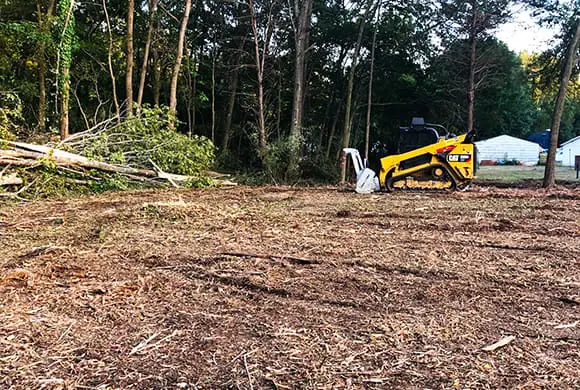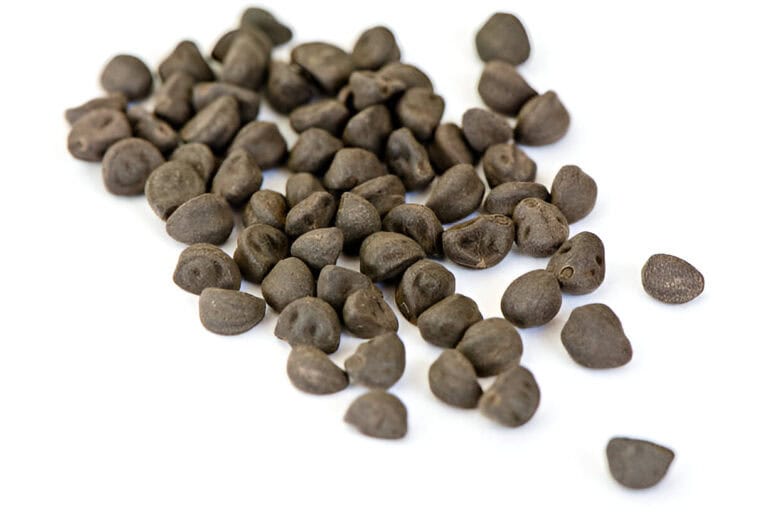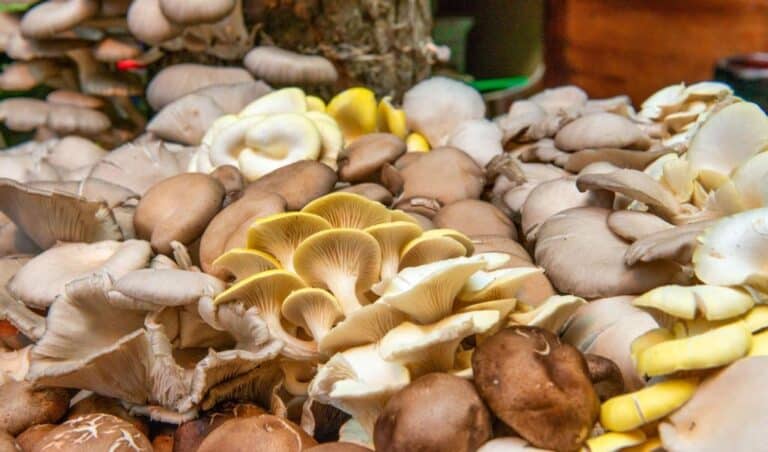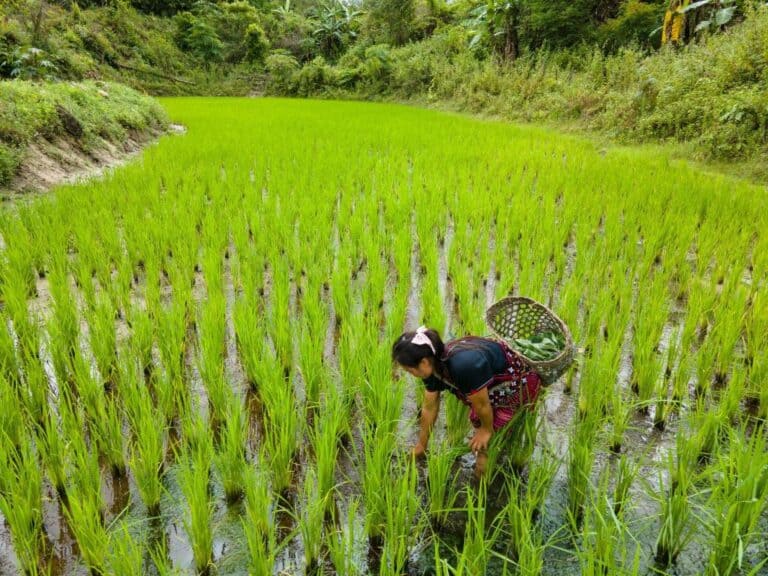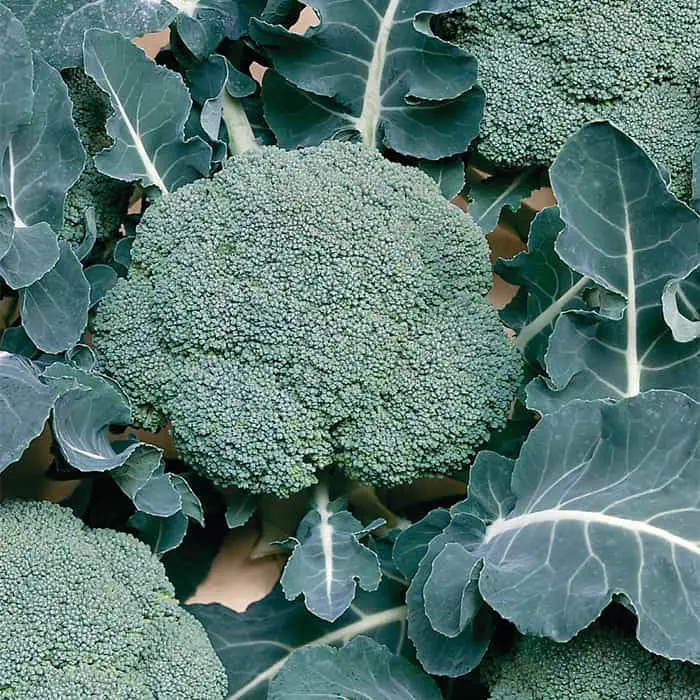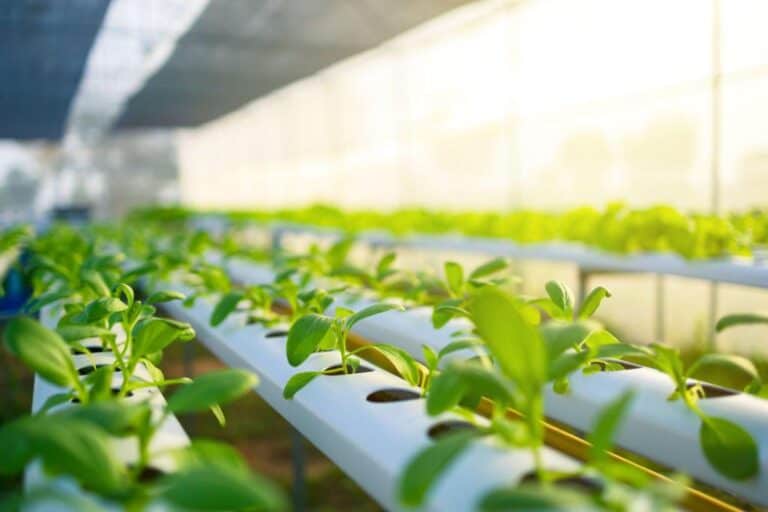Do Brussel Sprouts Have Flowers and Blooms? What They Look Like
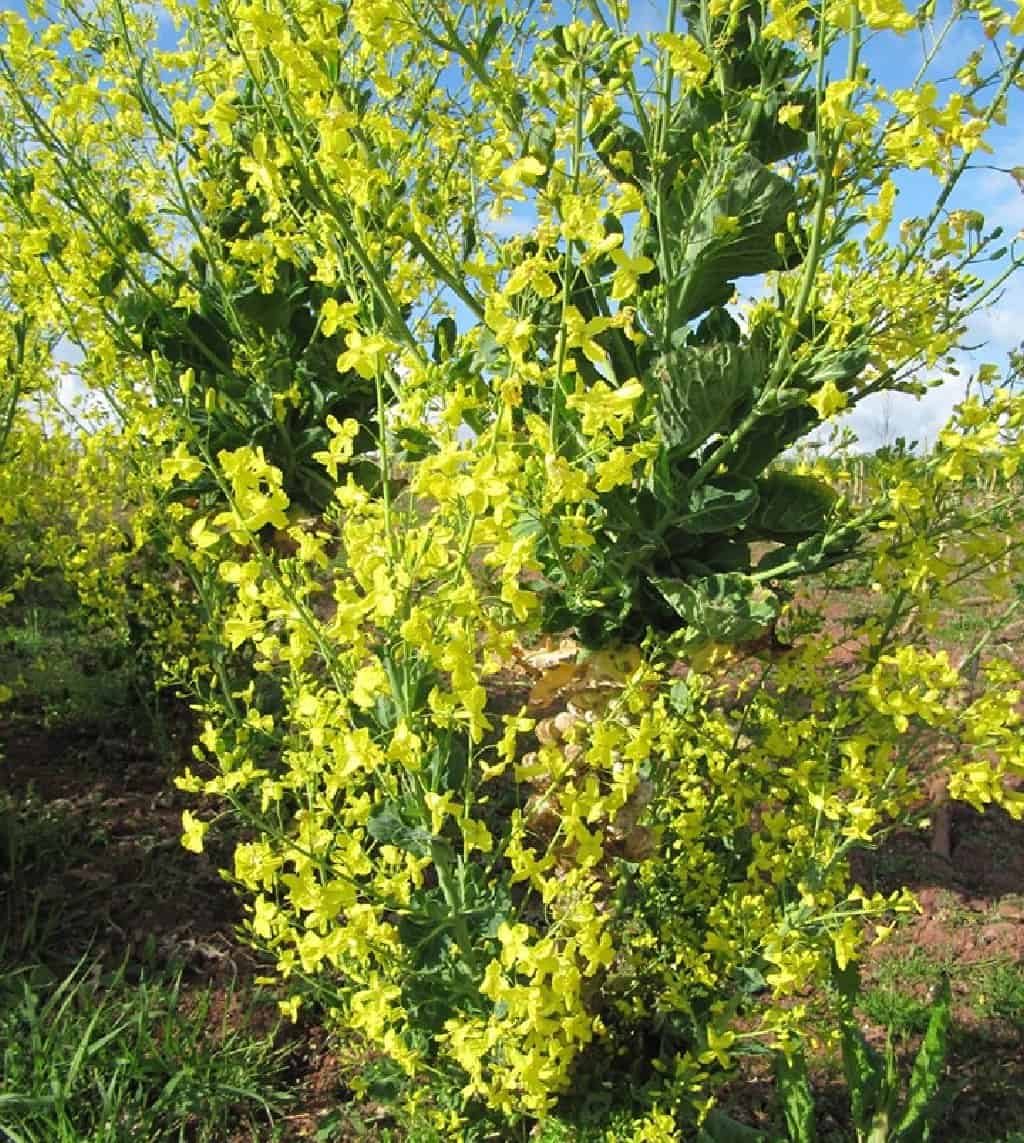
Brussels sprouts, those delightful miniature cabbage-like vegetables, have become a staple in many kitchens. We relish their savory taste and admire their compact structure. But have you ever wondered if Brussels sprouts have flowers and blooms of their own?
It turns out that these unassuming veggies have a secret floral side waiting to be explored. In this article, we will embark on a fascinating journey to unravel the mysteries surrounding Brussels sprouts and their hidden blossoms. We will delve into the world of Brussels sprout flowers, discovering their appearance, structure, and role in the life cycle of these remarkable plants.
Get ready to be amazed as we uncover the beauty and intricacy that lie beyond the familiar exterior of Brussels sprouts. So, let’s dive in and explore the captivating world of Brussels sprout flowers and what they truly look like.
Brussel sprouts, those miniature cabbage-like vegetables, are known for their delicious flavor and unique appearance. But have you ever wondered if Brussels sprouts have flowers and what they actually look like? In this article, we will explore the intriguing world of Brussels sprout flowers and blooms, shedding light on their presence, appearance, and the factors that influence their production.
Introduction to Brussel Sprouts and Their Growth Cycle
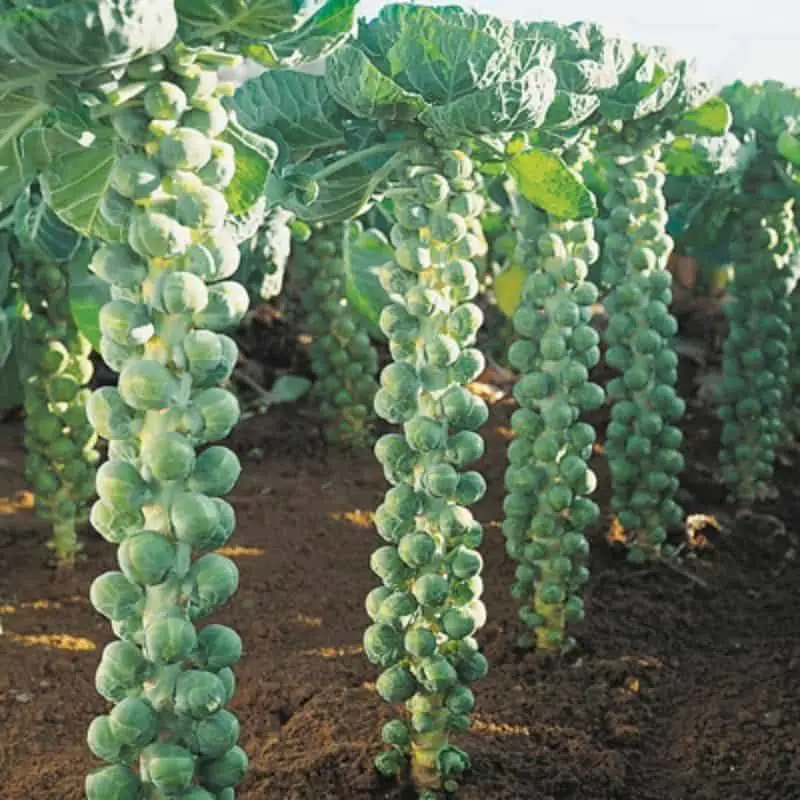
Brussels sprouts (Brassica oleracea) are a popular vegetable belonging to the Brassicaceae family, which also includes other well-known vegetables like cabbage, broccoli, and kale. These cool-season crops are appreciated for their unique, tight, leafy buds that develop along the stalk of the plant.
Brussels sprouts have a distinct flavor that can be described as nutty and slightly sweet, making them a favorite in many culinary dishes.
The growth cycle of Brussels sprouts begins with the germination of seeds. Like most plants, Brussels sprouts start their life as seeds, which are typically sown in early spring for a fall harvest. It’s important to note that Brussels sprouts are considered a long-season crop, taking anywhere from 80 to 120 days from transplanting to maturity.
The germinated seeds develop into seedlings, which are usually started indoors or in a greenhouse before being transplanted to the garden. Transplanting Brussels sprouts outdoors allows growers to give the plants a head start and ensure they have enough time to reach maturity before the arrival of frost or extreme heat.
Once the seedlings are transplanted into the garden, they begin to grow and establish themselves. Brussels sprouts require fertile, well-draining soil with a pH range of 6.0 to 7.5. They thrive in full sun but can tolerate some shade. Adequate spacing between plants is crucial to ensure proper air circulation and prevent the spread of diseases.
As the plants grow, they develop a tall stalk with leaves that provide energy and nutrients to support the formation of Brussels sprouts. These sprouts are essentially miniature cabbages that emerge from the leaf axils along the stalk. They start small but gradually increase in size as the plant continues to grow.
Temperature and day length have an impact on the growth of Brussels sprouts. They prefer cool temperatures between 60 and 65°F (15 and 18°C) for optimal growth. Cooler temperatures help to enhance the flavor and sweetness of the sprouts. In fact, a light frost can even improve the taste of Brussels sprouts, as it triggers the conversion of starches into sugars.
The growth cycle of Brussels sprouts culminates in the harvest of the sprouts. Harvesting typically begins when the sprouts are about 1 to 2 inches (2.5 to 5 cm) in diameter. The lower sprouts on the stalk mature first, while the upper ones continue to develop. Harvesting is typically done by snapping or cutting off the sprouts from the stalk, starting from the bottom and working upward.
It’s worth mentioning that not all Brussels sprouts mature at the same time, and the plant can continue to produce sprouts for several weeks, providing a continuous harvest. However, once the central growing point at the top of the plant starts to elongate and form flowers, the energy is diverted from sprout production towards flowering and seed formation.
Do Brussel Sprouts Have Flowers and Blooms?
Yes, Brussels sprouts can produce flowers and blooms. Here are some key points from the search results:
- Brussels sprouts are biennial plants and will produce yellow flowers with four petals if kept for two seasons.
- Once Brussels sprouts begin flowering, they won’t produce the mini cabbage-like heads that are typically harvested for consumption.
- Flowering Brussels sprouts are a sign that the plants have bolted, meaning they have gone to seed and are no longer edible.
- The best way to prevent Brussels sprouts from bolting is to pick the mature sprouts promptly.
- Flowering Brussels sprouts are a growing problem that can result in bitter, sinewy, and unsuitable plants.
- The flowers begin to grow at the end of the plant’s growing season, from the fresh growth at the top of the plant.
Explanation of the Flowering Stage in the Brussel Sprout Plant
The flowering stage of the Brussels sprout plant marks an important phase in its growth cycle. Like other members of the Brassica family, such as broccoli, cabbage, and cauliflower, Brussels sprouts are biennial plants, meaning they have a two-year life cycle. The flowering stage typically occurs during the second year of the plant’s life.
When the Brussels sprout plant reaches maturity, usually in the late summer or early fall of the second year, it begins to transition from its vegetative growth phase to the reproductive phase. Changes in the day’s length and temperature are just two examples of the environmental factors that cause this transition.
During the flowering stage, the Brussels sprout plant produces tall stalks with multiple branches. At the tip of each branch, small yellow flowers start to form. These flowers contain both male and female Brussels sprout reproductive organs, making the plant self-fertile.
The male reproductive organs are called stamens and consist of a filament topped with an anther, which produces pollen. The female reproductive organs are called pistils and consist of a stigma, style, and ovary.
Insects, particularly bees, frequently cross-pollinate the flowers of the Brussels sprout plant as they visit the flowers in search of nectar and unintentionally transfer pollen between flowers. However, the plant can also self-pollinate if no other suitable pollinators are available.
Once pollination occurs, the pollen grains land on the stigma of the flower. From there, a pollen tube grows down the style and fertilizes the ovules in the ovary. This fertilization process leads to seed formation within the ovary.
After successful pollination and fertilization, the Brussels sprout plant shifts its energy towards seed development. The flowers gradually wither and fall off, and the ovary begins to swell and mature into a seed pod. These seed pods are what we commonly refer to as Brussels sprouts.
The Appearance of Brussel Sprout Flowers and Blooms
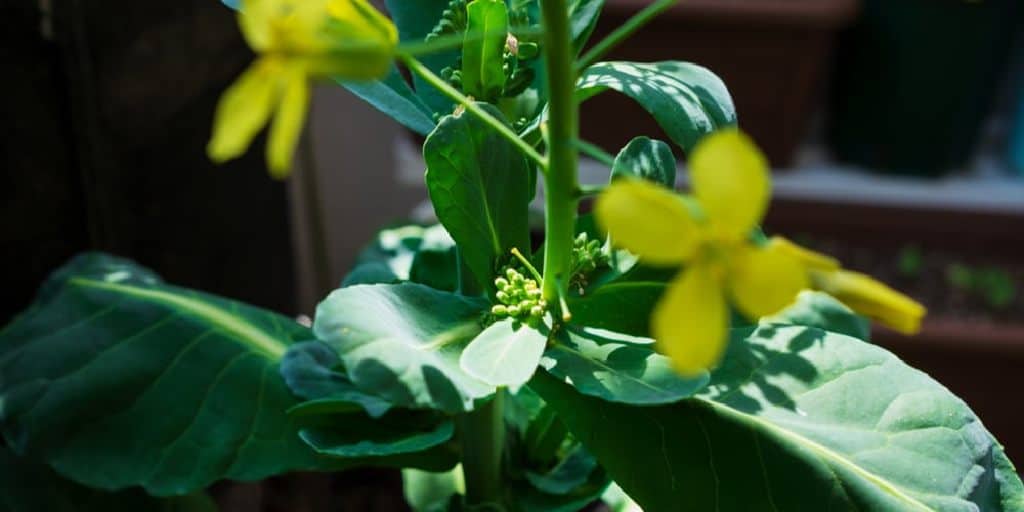
When Brussel sprouts enter the flowering stage, they develop clusters of small, yellow flowers. These flowers are quite different in appearance compared to the tight, leafy sprouts we associate with Brussel sprouts. The flowers are usually found at the top of the plant and emerge from the leaf axils.
The flowers of Brussel sprouts typically have four petals arranged in a cross shape, a characteristic feature of plants in the Brassicaceae family. The flowers are small and delicate, and while they may not be as showy as some other flowering plants, they play a crucial role in the plant’s reproductive process.
Here’s what you can expect when Brussels sprouts reach the flowering stage:
Flowering Stalks
As Brussels sprouts transition into their second year, a central flowering stalk emerges from the center of the plant. This stalk can reach a height of two to three feet, depending on the variety. It is from this stalk that the flowers and sprouts will develop.
Yellow Flowers
The flowers of Brussels sprouts are small and yellow, typically about half an inch in diameter. They form clusters along the length of the flowering stalk, similar to the structure of broccoli or cauliflower. Each cluster, also known as an inflorescence, consists of numerous individual flowers.
Four-Petaled Structure
Brussels sprout flowers have a distinct four-petaled structure, characteristic of plants in the Brassicaceae family. The petals are arranged in a cross shape, giving rise to another common name for this family of plants – the crucifers.
Delicate Fragrance
While not as fragrant as traditional garden flowers, Brussels sprout flowers do have a delicate aroma. If you get up close to a flowering Brussels sprout plant, you may notice a slight floral scent, although it is not as strong or
Understanding the Timing of Flower Formation in Brussel Sprouts
The timing of flower formation in Brussel sprouts is influenced by various factors. Generally, Brussel sprout plants start to produce flowers when they reach a certain stage of maturity. The exact timing can vary depending on the specific variety and growing conditions.
In most cases, Brussel sprout flowers start to appear in the late summer or early fall, typically several months after planting the seeds or transplanting seedlings. This flowering stage marks an important transition in the plant’s life cycle, signaling its readiness for reproduction.
Factors That Influence Flower Production in Brussel Sprouts
Several factors can influence the production of flowers in Brussel sprouts. These factors include:
- Day Length: Brussel sprouts are sensitive to day length, and certain varieties require specific day lengths to initiate flowering.
- Temperature: Cool temperatures are favorable for flower development in Brussel sprouts. Excessive heat or extended periods of warm weather can delay or hinder flower production.
- Nutrition: Adequate nutrition, particularly balanced levels of nitrogen, phosphorus, and potassium, plays a significant role in flower formation and overall plant health.
- Plant Spacing: Proper spacing between Brussel sprout plants ensures adequate airflow and sunlight penetration, which can influence flower production.
- Plant Age: Brussel sprouts need sufficient time to reach the flowering stage. Harvesting the sprouts too early can prevent the plant from developing flowers.
Importance of Brussel Sprout Flowers in the Reproductive Process
Now that we have explored the appearance of Brussels sprout flowers, let’s delve into their important role in the plant’s life cycle.
Pollination
Brussels sprout flowers serve a vital purpose in the reproductive process of the plant. They attract pollinators, such as bees, butterflies, and other beneficial insects, with their bright yellow color and subtle fragrance. These pollinators play a crucial role in transferring pollen from the male reproductive organs to the female reproductive organs of the flower, enabling fertilization to occur.
Seed Formation
Once pollination takes place, the fertilized flowers develop into seed pods. These elongated pods contain the developing seeds, which will be dispersed to ensure the survival and propagation of the species.
Sprout Formation
Interestingly, while Brussels sprout flowers play a crucial role in the formation of seeds, they are not directly responsible for the development of the sprouts we consume. Instead, it is the leaf buds, located in the axils of the leaves along the flowering stalk, that grow into the familiar Brussels sprouts we enjoy at our dinner tables. These leaf buds, known as sprouts, develop along the length of the stalk, gradually increasing in size and becoming tightly packed clusters of miniature cabbage-like heads.
Factors That Influence Successful Pollination in Brussel Sprouts
Pollination is the transfer of pollen from the male reproductive organs to the female reproductive organs of a plant. In the case of Brussel sprouts, pollination is necessary for the flowers to be fertilized and for seed production to occur.
Pollination can occur through various means, including wind, insects, or even self-pollination.
Several factors can influence the success of pollination in Brussel sprout flowers. These factors include:
- Pollinator Availability: Brussel sprouts rely on pollinators, such as bees, butterflies, and other insects, for efficient pollination. Ensuring a healthy population of pollinators in your garden can increase the chances of successful pollination.
- Weather Conditions: Weather plays a significant role in pollination. Windy conditions can aid in the dispersal of pollen, while excessively hot or humid weather can hinder pollinator activity.
- Plant Density: The spacing and arrangement of Brussel sprout plants can affect pollinator access to the flowers. Proper plant spacing allows for better pollination opportunities.
- Time of Flowering: The timing of flower opening and pollen availability is crucial for successful pollination. Ensuring that the flowers are receptive and that pollen is viable increases the likelihood of fertilization.
By considering these factors and creating a pollinator-friendly environment, you can promote successful pollination and maximize seed production in your Brussel sprout plants.
Description of the Color, Shape, and Size of Brussel Sprout Flowers
Brussel sprout flowers are a sight to behold, adding a touch of beauty to the vegetable garden. These flowers typically exhibit the following characteristics:
- Color: Brussel sprout flowers are small and usually yellow in color. The vibrant yellow hue adds a pop of brightness to the plant.
- Shape: The flowers of Brussel sprouts are composed of four petals arranged in a cross shape. This arrangement is a common trait among plants in the Brassica family.
- Size: Brussel sprout flowers are relatively small, typically measuring around half an inch in diameter. They may appear clustered together at the top of the plant, emerging from the leaf axils.
While Brussel sprout flowers may not be as showy or elaborate as the flowers of ornamental plants, their delicate and unassuming appearance holds the promise of future sprout development.
Changes in the Appearance of Brussel Sprout Flowers as They Mature
As Brussel sprout flowers progress through their growth cycle, their appearance undergoes subtle changes. Initially, when the flowers first emerge, they may appear tightly closed and compact. However, as they mature, you may observe the following transformations:
- Petal Opening: The petals of the flowers gradually unfurl, revealing their cross shape. This expansion allows the reproductive organs within the flower to be more accessible to pollinators.
- Stamen Development: The stamen, which is the male reproductive organ, becomes more prominent as the flowers mature. The stamen consists of the filament and anther, where pollen is produced.
- Pollen Release: As the flowers near their peak, the anthers release pollen. This fine, powdery substance serves as the male gametes required for pollination.
These changes in the appearance of Brussel sprout flowers signify their readiness for pollination and the subsequent development of seeds.
Should I Cut the Flowers Off of My Brussel Sprouts?
If your sprout plant is bolting before its second year, you want to put a stop to that by cutting off the flowering heads. Brussel sprouts often react to warm weather and long days by attempting to flower and reproduce.
Long stalks with flowers on their ends are more than an aesthetic change. If the plant begins to bolt and focus its energy on flowering, its lower sections, where you harvest from, may languish.
These flower heads require a lot of energy for the plant to produce; energy better spent producing tasty sprouts!
When you see your brussel sprouts begin to flower, cut the heads off the flowers as soon as possible. If you don’t, your sprouts may take on a bitter flavor or stop growing altogether.
Of course, if this is your second year, the plant is nearing the end of its life cycle. You can attempt to delay the flowering process to continue harvesting sprouts, but by the end of the second season, your brussel sprout plants will die, with the flower present or not.
Should you wish to save the seeds to plant in future seasons, allow the plant to flower fully. Soon after flowering, your brussel sprout plants will form large seed pods, which can be harvested and stored for later planting.
To harvest brussel sprout seeds, wait until the seed pods have turned brown and begun to dry out. The dry pods can be stored as they are until you are ready to plant or broken open to reveal the seeds within. Store your seeds in a cool, dry place until they are ready for planting.
Monitoring and Observing Brussel Sprout Blooms for Optimal Harvest
Observing and monitoring Brussel sprout blooms can provide valuable insights into the readiness of your crop for harvest. Here are some tips to help you make the most of your Brussel sprout plants:
- Timing: Keep track of the approximate time since planting or transplanting to anticipate when your Brussel sprouts might enter the flowering stage. This can vary depending on the variety and growing conditions.
- Visual Inspection: Regularly inspect your Brussel sprout plants for the emergence of flowers. Look for clusters of yellow blooms at the top of the plant.
- Petal Color: Observe the color of the petals. If they appear vibrant yellow, it indicates that the flowers are at their peak and ready for pollination.
- Pollen Presence: Check for the release of pollen from the anthers. Gently touch the anthers with a clean finger or brush and observe if any pollen adheres.
- Pollinator Activity: Observe the presence of pollinators, such as bees and butterflies, around the flowers. Their activity is an indication that pollination is taking place.
By monitoring and observing Brussel sprout blooms, you can determine the optimal time to harvest your Brussel sprouts for the best flavor and texture. Harvesting at the right stage ensures that the sprouts are tender and sweet, providing a delightful culinary experience.
When it comes to harvesting Brussel sprouts, timing is key. You want to pick the sprouts at their peak, but before they become overripe or begin to deteriorate. Here are some guidelines to help you determine the ideal harvest time:
- Sprout Size: Brussel sprouts typically mature from the bottom of the stalk upward. Start harvesting when the sprouts reach a desirable size, usually around 1 to 1.5 inches in diameter. This size ensures that the sprouts have developed their characteristic tightness and flavor.
- Firmness: Gently squeeze the sprouts to assess their firmness. They should feel compact and tightly closed. Avoid harvesting sprouts that feel soft or have opened leaves, as they may be past their prime.
- Color: Examine the color of the sprouts. They should have a vibrant green hue. Avoid harvesting sprouts that have turned yellowish or brown, as they may have lost their freshness and flavor.
- Leaf Condition: Check the condition of the outer leaves. They should be intact and healthy. If the leaves have started to yellow or show signs of damage, it may indicate that the sprouts have been on the stalk for too long.
To harvest Brussel sprouts, simply cut or snap off the sprouts from the stalk. Start from the bottom of the plant and work your way up, removing the mature sprouts while leaving the smaller ones to continue developing. This staggered harvest allows for a longer harvesting period and ensures that you enjoy a steady supply of fresh sprouts.
Once you’ve harvested your Brussel sprouts, it’s time to savor their deliciousness in various culinary preparations. Whether you roast them, sauté them, or add them to soups and stir-fries, Brussel sprouts offer a delightful and nutritious addition to your meals.
Conclusion
In conclusion, Brussel sprouts do indeed have flowers and blooms that add a touch of beauty to the vegetable garden. These small, yellow flowers undergo changes as they mature, eventually leading to the development of sprouts. By monitoring and observing the blooms, you can determine the optimal time to harvest your Brussel sprouts for the best flavor and texture. So, keep a close eye on your Brussel sprout plants and enjoy the reward of your patience and care in the form of delicious, homegrown sprouts.
FAQ
Can you eat Brussel sprout flowers?
While the flowers of Brussel sprouts are edible, they are not commonly consumed. The focus of cultivation is usually on harvesting the sprouts themselves.
Do Brussel sprout flowers attract bees?
Yes, Brussel sprout flowers can attract bees and other pollinators. The bright yellow color and nectar of the flowers serve as a magnet for these beneficial insects.
What happens if Brussel sprout flowers are not pollinated?
If Brussel sprout flowers are not pollinated, they will not develop seeds. However, the sprouts can still form even without pollination.
How long after pollination do Brussel sprout seeds develop?
After successful pollination, it takes several weeks for Brussel sprout seeds to develop fully. The seeds will appear inside the pods that form after pollination.
Are Brussel sprout flowers important for the growth of the sprouts?
While Brussel sprout flowers play a role in the reproductive process of the plant, they are not directly necessary for the growth of the sprouts. Brussel sprouts can still form and develop even if the flowers are not pollinated. However, pollination and seed production are crucial for the plant’s reproductive cycle and the continuation of the Brussel sprout species.

